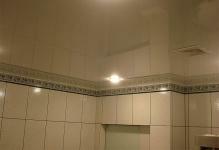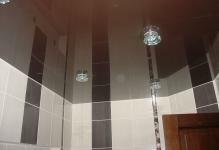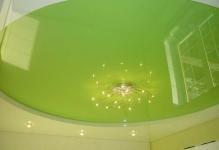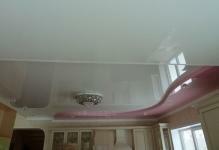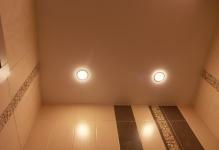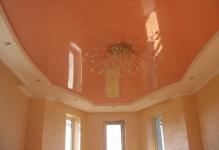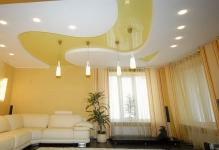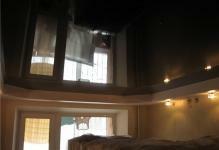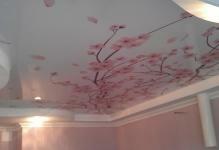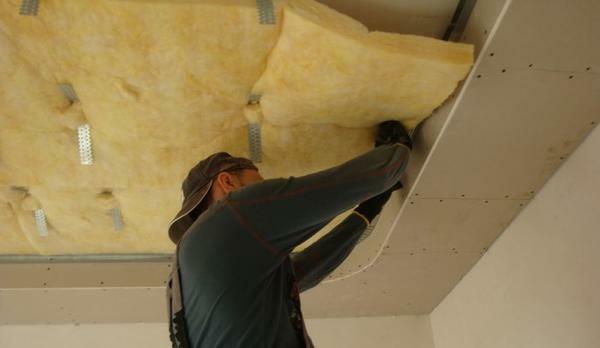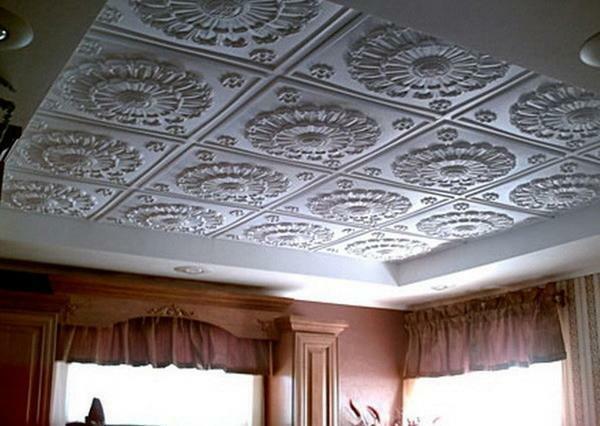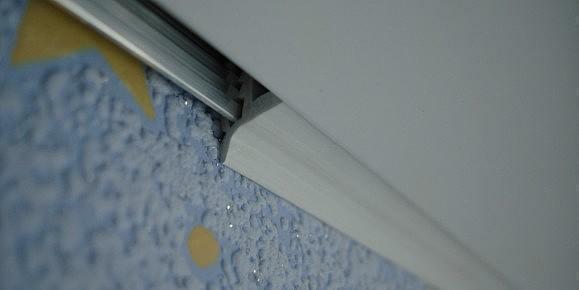 for suspended ceilings Insert not only mask the gap, but also give the interior a stage Modern suspended ceiling embodies the incredible design ideas, combined with high technology. Improved materials are given different shapes and decorations. However, the tension ceiling system has one feature - after installation there is a small gap between the baguette( wall) and the ceiling base, the so-called technological groove, which appears as a result of fixing the film not to the wall itself, but to the profile.
for suspended ceilings Insert not only mask the gap, but also give the interior a stage Modern suspended ceiling embodies the incredible design ideas, combined with high technology. Improved materials are given different shapes and decorations. However, the tension ceiling system has one feature - after installation there is a small gap between the baguette( wall) and the ceiling base, the so-called technological groove, which appears as a result of fixing the film not to the wall itself, but to the profile.
-
- Inlays: especially when choosing the material
- Stretch ceilings with inset: species diversity
- plastic insert into the ceiling: scope
- Polyurethane cap and rubber insert for ceiling
- How to insert an insert insuspended ceiling:
- installation rules Reviews inserts for suspended ceilings( video)
- Examples inserts for suspended ceilings( photo interior)
Inlays: waspsWhen choosing a material
The insert, which is also called a masking tape, a plug, a filler, creates a soft transition of the joint between the ceiling and the wall. It is a molded profile, with a complex cross-section.
main advantages inserts - plugs:
- Semnost( if necessary change the wallpaper or partially dismantle the ceiling, for example, in case of flooding, it is possible to remove the cap, and then insert it in place);
- Ease of installation( special cross-section makes it easy to attach the insert);
- Variety of shapes for non-standard tension ceilings( there are flexible profiles in the assortment of inserts that are mounted on an uneven surface).
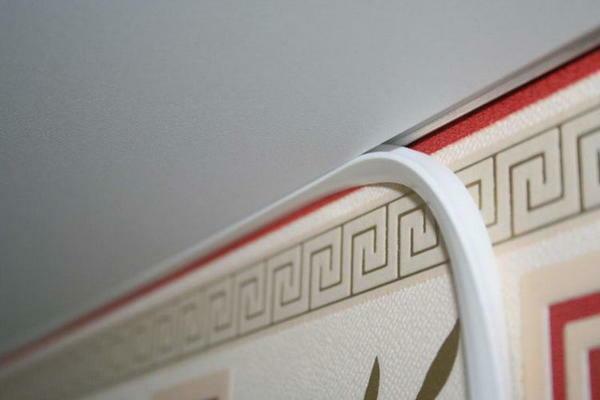 laths hides features tensioning structure harmoniously generates multilevel transitions in tensioning system and masks the surface roughness
laths hides features tensioning structure harmoniously generates multilevel transitions in tensioning system and masks the surface roughness
Depending on the width, closing the technical groove insert can overlap the gap between the baguette and the wall, in the case of veryUneven surface.
The material for this profile is:
- Plastic;
- Rubber;
- Polyfoam;
- Polyurethane;
- Tree.
Depending on the material used, the inserts have their own characteristics and are designed for certain conditions. Also, the material affects how the plug is installed.
Tension ceilings with insert: a variety of types
To properly select the plugs for the tension system, you need to know their varieties and the main differences. Often, the installation of the ceiling requires the use of several types of inserts, depending on the situation and conditions of the room.
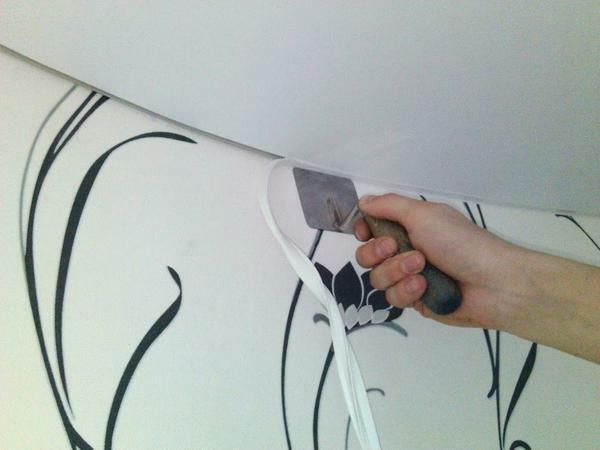 Forms plugs T and F are designed exclusively for flat surfaces
Forms plugs T and F are designed exclusively for flat surfaces
Depending on the section plugs are:
- T-shaped;
- F-shaped;
- P-shaped( soft plug);
- S-shaped with a variety of SL;
- L-shaped;
- Shtapik-wedge-shaped with glazing bead construction.
Inserts of the type S are suitable for uneven walls, as well as for large decorations on the walls in the form of decorative plaster or vinyl wallpaper with rushes.
A variety of inserts of type S are considered to be plugs with a wide flange, which are marked as SL-shaped.
A stub of the form L-wall angle, imitates a ceiling skirting. The R-shaped soft insert is used for harpoon-mounted structures.
Plastic insert in the ceiling: scope
Sometimes manufacturers of tensioning structures also manufacture components suitable for a particular brand, including inserts. But often you have to navigate yourself and choose the right stub for a specific profile baguette.
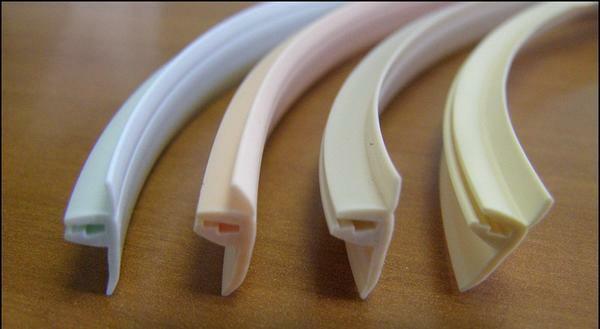 insert Flexibility depends on the material in its manufacture
insert Flexibility depends on the material in its manufacture
When choosing insert should pay attention:
- Compatibility section with baguette inserts, installed around the perimeter;
- On the flexibility of the insert, with rounded surface shapes and multi-tier tensioning systems;
- On the tightness of the plug with the profile, so that no gaps remain, and dust does not accumulate;
- For installation, which should occur without glue and sealants;
- on color selection( box that serves as a ceiling moldings can be selected under the ceiling the color or shade ceiling in contrast, can be combined by the color of the wall).
If there are irregularities on the surface of the wall, then a very soft insert will repeat them, and harder will hide them. Plastic plugs are convenient to mask the unevenness of the wall. Such inserts do not lend themselves to deformation at high humidity and can withstand high - low temperatures.
Polyurethane cap and rubber insert for ceiling
Polyurethane and rubber inserts called soft caps, becauseThey are plastic and more flexible in comparison with plastic inserts. Such camouflage tapes are used on rounded surfaces and for multi-level tension systems. You can install such tapes with a special spatula without sharp ends, so as not to damage the tension base.
However, between the soft inserts have their differences:
- Polyurethane insert more durable than rubber( rubber is subject to humidity and temperature changes, reducing its elasticity and makes the material more rigid);
- The service life of the polyurethane insert is above rubber;
- Rubber inserts have a heterogeneous composition, and the presence of natural components that make the material flexible, shortens the life of the material;
- Corrosion and abrasive wear are more subject to rubber inserts.
rubber fillers on the market are only two standard colors - white and black
Polyurethane inserts are the most popular not only for its performance, but also a wide choice of colors.
In addition to decorative inserts, other options can be used to hide the technical gap.
Decorative cord is a woven, knitted or twisted fabric that is used to mask the groove and decorate the interior. There is a wide choice of color palette and texture of decorative cords for tensioning structures. To install such an insert, the cord is gently inserted into the gap without the use of cutting tools.
These options include:
- Decorative cord;
- Ceiling cornice.
The ceiling cornice also masks the technical groove, but it is fixed to the wall without the possibility of removable dismantling. This cornice has the additional advantage: when installing the cornice a few centimeters below the ceiling in the resulting space, you can mount a backlight around the perimeter of the room.
How to insert the insert into the suspended ceiling: mounting rules
You can install the plug for the tension structure yourself. Video with instructions and step-by-step photos explain this process in detail.
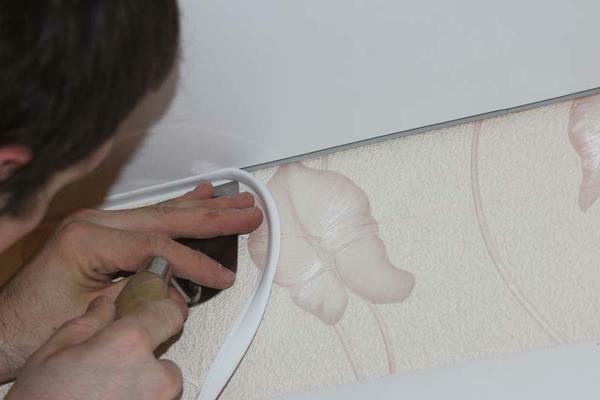 Insert box in the suspended ceiling and can be myself, with no experience in this business
Insert box in the suspended ceiling and can be myself, with no experience in this business
installation Features:
- measures the length of inserts, carefully adjusted the angles in the joints;
- Installation starts from the corners of the room;
- Insert with a section is inserted into the gap by pressing and pressing against the plug;
- If necessary, the clearance is smeared with cosmetic vaseline;
- For the convenience of work, a special spatula is used that does not have a sharp part.
For fabric tensioning structures use profiles with "clothespins", which in themselves mask the gap. The wall and ceiling clothespins differ in the way they are installed.
Inserts for tension ceilings( video)
Ceiling inserts for tensioning structures are conveniently installed, effectively cope with the need to hide gaps, and also have a significant advantage due to the removable mounting system. And with the help of a wide color range, they are easily selected for any interior.
